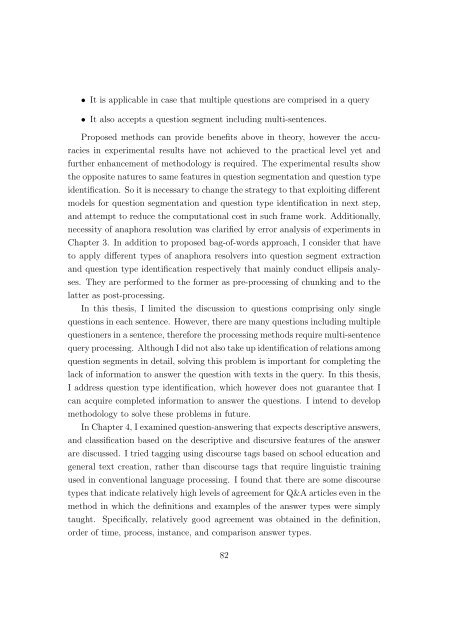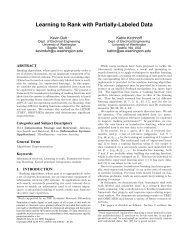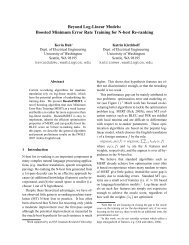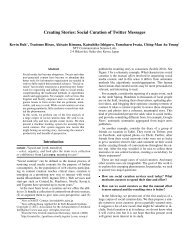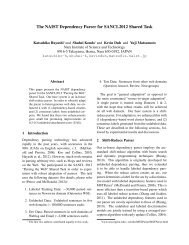file - ChaSen - 奈良先端科学技術大学院大学
file - ChaSen - 奈良先端科学技術大学院大学
file - ChaSen - 奈良先端科学技術大学院大学
- No tags were found...
You also want an ePaper? Increase the reach of your titles
YUMPU automatically turns print PDFs into web optimized ePapers that Google loves.
• It is applicable in case that multiple questions are comprised in a query• It also accepts a question segment including multi-sentences.Proposed methods can provide benefits above in theory, however the accuraciesin experimental results have not achieved to the practical level yet andfurther enhancement of methodology is required. The experimental results showthe opposite natures to same features in question segmentation and question typeidentification. So it is necessary to change the strategy to that exploiting differentmodels for question segmentation and question type identification in next step,and attempt to reduce the computational cost in such frame work. Additionally,necessity of anaphora resolution was clarified by error analysis of experiments inChapter 3. In addition to proposed bag-of-words approach, I consider that haveto apply different types of anaphora resolvers into question segment extractionand question type identification respectively that mainly conduct ellipsis analyses.They are performed to the former as pre-processing of chunking and to thelatter as post-processing.In this thesis, I limited the discussion to questions comprising only singlequestions in each sentence. However, there are many questions including multiplequestioners in a sentence, therefore the processing methods require multi-sentencequery processing. Although I did not also take up identification of relations amongquestion segments in detail, solving this problem is important for completing thelack of information to answer the question with texts in the query. In this thesis,I address question type identification, which however does not guarantee that Ican acquire completed information to answer the questions. I intend to developmethodology to solve these problems in future.In Chapter 4, I examined question-answering that expects descriptive answers,and classification based on the descriptive and discursive features of the answerare discussed. I tried tagging using discourse tags based on school education andgeneral text creation, rather than discourse tags that require linguistic trainingused in conventional language processing. I found that there are some discoursetypes that indicate relatively high levels of agreement for Q&A articles even in themethod in which the definitions and examples of the answer types were simplytaught. Specifically, relatively good agreement was obtained in the definition,order of time, process, instance, and comparison answer types.82


